ISSUE 19: Light
The “Light” issue of Minerva Rising is like a snapshot of our human experience. It illuminates familiar themes in ways that makes us reconsider what we thought we knew. “Out of the Blue, Into the Clay” by Susan Almazol casts fresh insight on navigating grief. A ceramics class not only helps to ease the pain of losing her best friend, but also teaches Almazol to trust her inner guide:
My hands sink into the clay. They push in one side, bending the cylinder forward. I look at the model, a pudgy blonde in her 30s. Her curved back is turned towards me. Hidden by her hair, her face looks down at the platform, with hands resting on her thighs. I spot a brown mole on her left forearm. The sculptural arc of her back with vertebra sticking out captivates me. As my hands caress the clay, I admire her stillness and wonder if I could like stand that with six women staring at me. Soon my hands begin moving on their own. My right thumb traces a gulley on the cylinder, from top to bottom, down the middle, like a spinal column. Fingers on both hands pinch out clay to widen the gulley. Drawn back to the top, my hands reach inside the cylinder. They push out two oblong protrusions, one on each side of the gulley, to create almond- shaped shoulder blades.
Kristen Morton’s “Photochemistry of Place Series” uses the syntax of photography to cast light on a relationship that is developing between the photographer and her subject:
Sailing through midnight,
I capture vignettes on deck.
Stop-motion waves stutter
my insignificant flash. Exposure
haunts our proximity
This particular issue of Minerva Rising grew out of my own personal need for light in dark places. I envisioned a collection of work that would be a beacon of light for those who were feeling hopeless. I am so proud to say that my mission was accomplished. It is with much pleasure that I present the writers and artists included in “Light” to our readers. Their pieces are not necessarily lighthearted, but their willingness to write from difficult places is awe-inspiring and hopeful.
–Excerpt from Letter from the Editor

Contributors
We are proud to feature the following amazing contributors in this issue of Minerva Rising. Thank you for being a part of the Minerva community.
Susan Almazol
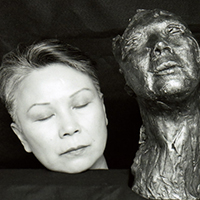 Susan Almazol is an artist whose media includes clay, cloth, and conversation. Her ceramic sculptures plumb inner realities for universal truths, her textile creations are over the top, and she converses with her audience through the written word and dance. Her creative energy was re-ignited after healing from the loss of her beloved friend, Trina Grillo. Only 47, Trina lit a path of courageous and passionate commitment to social justice and devotion to family.
Susan Almazol is an artist whose media includes clay, cloth, and conversation. Her ceramic sculptures plumb inner realities for universal truths, her textile creations are over the top, and she converses with her audience through the written word and dance. Her creative energy was re-ignited after healing from the loss of her beloved friend, Trina Grillo. Only 47, Trina lit a path of courageous and passionate commitment to social justice and devotion to family.
Joanne Clarkson
 Joanne Clarkson’s fourth poetry collection, Believing the Body, was published by Gribble Press in 2014. Her poems have appeared recently in Rhino, the Baltimore Review, Blood and Thunder and Saranac Review. She works as a nurse and a fortune-teller. In her re-write of the traditional legend where Icarus becomes overconfident and distracted and is defeated by the sun, she contrasts his sister’s finding herself in order to convey what light means to this world.
Joanne Clarkson’s fourth poetry collection, Believing the Body, was published by Gribble Press in 2014. Her poems have appeared recently in Rhino, the Baltimore Review, Blood and Thunder and Saranac Review. She works as a nurse and a fortune-teller. In her re-write of the traditional legend where Icarus becomes overconfident and distracted and is defeated by the sun, she contrasts his sister’s finding herself in order to convey what light means to this world.
Sarah Edwards
 It is not surprising that the theme of light brings up thoughts and images about the moon. In this poem, Sarah Edwards wonders if the moon might actually feel like a victim of Earth’s self-interest. Sarah is a retired clergyperson, enjoying writing poems instead of sermons. She lives in North Carolina and is excited about the release of her first book of poetry, Pandora, Let’s Talk, published by Finishing Line Press.
It is not surprising that the theme of light brings up thoughts and images about the moon. In this poem, Sarah Edwards wonders if the moon might actually feel like a victim of Earth’s self-interest. Sarah is a retired clergyperson, enjoying writing poems instead of sermons. She lives in North Carolina and is excited about the release of her first book of poetry, Pandora, Let’s Talk, published by Finishing Line Press.
Ellen Fangman
 Ellen Fangman is a native of Omaha, Nebraska, where she teaches college English. “Bridal Veil Falls” touches on the theme of light as it emanates from nature, a light that is easily dismissed by an adolescent caught up in moments of darkness and melancholy. “Bridal Veil Falls” is also a chapter from Ellen’s dissertation, a memoir written at the University of Kansas in fulfillment of her Ph.D. Like the other chapters, it is epistolary in form and finds its shape as a letter to a famous artist. The piece is dedicated to her father, who encouraged her to write about her life, one he so generously enriched and enlightened with his goodness.
Ellen Fangman is a native of Omaha, Nebraska, where she teaches college English. “Bridal Veil Falls” touches on the theme of light as it emanates from nature, a light that is easily dismissed by an adolescent caught up in moments of darkness and melancholy. “Bridal Veil Falls” is also a chapter from Ellen’s dissertation, a memoir written at the University of Kansas in fulfillment of her Ph.D. Like the other chapters, it is epistolary in form and finds its shape as a letter to a famous artist. The piece is dedicated to her father, who encouraged her to write about her life, one he so generously enriched and enlightened with his goodness.
Jane Ellen Glasser
 Jane Ellen Glasser has been writing poetry for 50 years, a passion that has not dimmed with time. The theme of light and dark threads through her six collections. Her first book, Naming the Darkness, addressed difficult experiences purged by bringing them to light. Jane’s poetry has appeared in numerous journals, such as Hudson Review, Southern Review, Virginia Quarterly Review, Georgia Review, Hayden’s Ferry Review and Poetry Northwest. Her poems have garnered numerous awards. Her chapbook On the Corner of Yesterday, published in 2010, was followed by The Long Life, which won the Poetica Publishing Company Chapbook Contest in 2011 and was released in December 2011. The Red Coat was released by FurtureCycle Press in 2013, and the chapbook, Cracks, appeared from that press in March 2015.
Jane Ellen Glasser has been writing poetry for 50 years, a passion that has not dimmed with time. The theme of light and dark threads through her six collections. Her first book, Naming the Darkness, addressed difficult experiences purged by bringing them to light. Jane’s poetry has appeared in numerous journals, such as Hudson Review, Southern Review, Virginia Quarterly Review, Georgia Review, Hayden’s Ferry Review and Poetry Northwest. Her poems have garnered numerous awards. Her chapbook On the Corner of Yesterday, published in 2010, was followed by The Long Life, which won the Poetica Publishing Company Chapbook Contest in 2011 and was released in December 2011. The Red Coat was released by FurtureCycle Press in 2013, and the chapbook, Cracks, appeared from that press in March 2015.
Laura Anne Heller
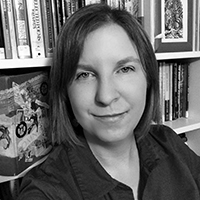 Laura Anne Heller has always had a fascination with light and shadow, be it in black-and-white photography or in the way sunlight alters landscapes and relationships in poetry. It only made sense that poetry would become the tool she used to capture the dark and light of life in Mississippi. Her work as an archivist provides regular inspiration of imagined stories in old photographs, newspapers, and regional studies.
Laura Anne Heller has always had a fascination with light and shadow, be it in black-and-white photography or in the way sunlight alters landscapes and relationships in poetry. It only made sense that poetry would become the tool she used to capture the dark and light of life in Mississippi. Her work as an archivist provides regular inspiration of imagined stories in old photographs, newspapers, and regional studies.
Karmen Kallio Hendricks
 To Karman Kallio Hendricks, light is understanding. Getting to the heart of who we are and how we view the world requires us to examine how the past informs our present. She is fascinated by all the ways our perception and understanding of a common experience can differ so drastically.
To Karman Kallio Hendricks, light is understanding. Getting to the heart of who we are and how we view the world requires us to examine how the past informs our present. She is fascinated by all the ways our perception and understanding of a common experience can differ so drastically.
Sue Howell
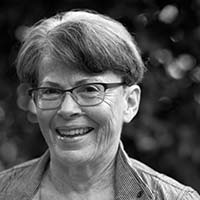 Sue Howell published her first poem as a second grader at Minnehaha Grade School in Minneapolis. Since then, she’s lived in Dallas, Milwaukee (high school), New Orleans (college), and Illinois, (more college) before moving to Durham, North Carolina. She got serious about poetry after leaving a career in high school and university teaching. Sue has published poems in Passager, Southern Indiana Review, and various regional journals. She has won some local contests, and she’s been a finalist in the River Styx International Poetry Contest as well as the 2012 Tennessee Williams Literary Festival. Her poems often associate “light” with “vision.” In “Water Aerobics,” the blinding light is a vision of what lies beyond our passing concerns.
Sue Howell published her first poem as a second grader at Minnehaha Grade School in Minneapolis. Since then, she’s lived in Dallas, Milwaukee (high school), New Orleans (college), and Illinois, (more college) before moving to Durham, North Carolina. She got serious about poetry after leaving a career in high school and university teaching. Sue has published poems in Passager, Southern Indiana Review, and various regional journals. She has won some local contests, and she’s been a finalist in the River Styx International Poetry Contest as well as the 2012 Tennessee Williams Literary Festival. Her poems often associate “light” with “vision.” In “Water Aerobics,” the blinding light is a vision of what lies beyond our passing concerns.
Kathryn Hutchinson
 Kate Hutchinson teaches English in a large high school near Chicago, and each summer she teaches poetry writing at a city university. A chapbook of her poems, The Gray Limbo of Perhaps, is available at Finishing Line Press. About this poem, the author notes: Light filters into poems in unending ways, often as tonality for memory, for warmth, for life. In this poem, light brings only terror. PoetKateHutchinson.wordpress.com
Kate Hutchinson teaches English in a large high school near Chicago, and each summer she teaches poetry writing at a city university. A chapbook of her poems, The Gray Limbo of Perhaps, is available at Finishing Line Press. About this poem, the author notes: Light filters into poems in unending ways, often as tonality for memory, for warmth, for life. In this poem, light brings only terror. PoetKateHutchinson.wordpress.com
Misty Kiwak Jacobs
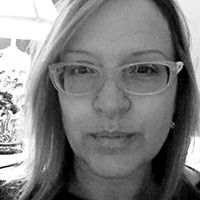 “Chiaroscuro” is the first chapter from Misty Jacobs’ memoir, The God of Sleep, the tale of a kaleidoscopic childhood that flashed between darkness, filth and abuse at her mother’s and the bright, salvific, desert landscapes at her father’s. Misty was always seeking to unleash light before she knew it was a metaphor. A graduate of Sarah Lawrence College and an Arizona native, she currently lives and writes in a 250-year-old barn in upstate New York.
“Chiaroscuro” is the first chapter from Misty Jacobs’ memoir, The God of Sleep, the tale of a kaleidoscopic childhood that flashed between darkness, filth and abuse at her mother’s and the bright, salvific, desert landscapes at her father’s. Misty was always seeking to unleash light before she knew it was a metaphor. A graduate of Sarah Lawrence College and an Arizona native, she currently lives and writes in a 250-year-old barn in upstate New York.
Joan Kantor
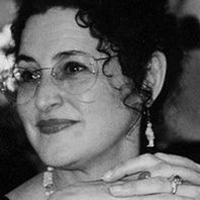 Joan Kantor is a poet and educator. Her work has been published in numerous literary journals, and she recently took first prize in the Hackney Literary Awards. Her book Shadow Sounds was a finalist for The Foreward Reviews Book of the Year Award, and she has just had her second collection, Fading into Focus, a memoir in verse, published. Her poem, “Agnostic”, recently won First Prize for Poetry in The Hackney Literary Awards. She has been a poetry consultant for The Sunken Garden Poetry Festival as well as a mentor and judge in its Fresh Voices Poetry Competition for youth. Her work has been in several ekphrastic shows, and she performs in Stringing Words Together, a music and poetry performance experience.
Joan Kantor is a poet and educator. Her work has been published in numerous literary journals, and she recently took first prize in the Hackney Literary Awards. Her book Shadow Sounds was a finalist for The Foreward Reviews Book of the Year Award, and she has just had her second collection, Fading into Focus, a memoir in verse, published. Her poem, “Agnostic”, recently won First Prize for Poetry in The Hackney Literary Awards. She has been a poetry consultant for The Sunken Garden Poetry Festival as well as a mentor and judge in its Fresh Voices Poetry Competition for youth. Her work has been in several ekphrastic shows, and she performs in Stringing Words Together, a music and poetry performance experience.
Sarah Key
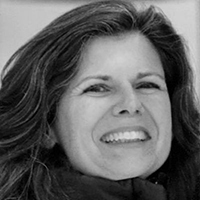 “The Girl with a Pearl Earring” describes the Vermeer painting in language from the poet’s neighborhood in Harlem. The protagonist’s repetition of the 17th century Dutch word “tronie” is about shining light on “types” in both art as well as cultural stereotypes. The poem’s protagonist is spellbound by Vermeer’s use of light in the painting. Sarah Key has had poems published in Poet Lore, Naugatuck River Review, InPatient Press, Poetry Nook Magazine, Truck, Enizagam, Prelude, Melancholy Hyperbole, and Kaleidoscope. She has eight published cookbooks and eight essays published in the Huffington Post.
“The Girl with a Pearl Earring” describes the Vermeer painting in language from the poet’s neighborhood in Harlem. The protagonist’s repetition of the 17th century Dutch word “tronie” is about shining light on “types” in both art as well as cultural stereotypes. The poem’s protagonist is spellbound by Vermeer’s use of light in the painting. Sarah Key has had poems published in Poet Lore, Naugatuck River Review, InPatient Press, Poetry Nook Magazine, Truck, Enizagam, Prelude, Melancholy Hyperbole, and Kaleidoscope. She has eight published cookbooks and eight essays published in the Huffington Post.
www.huffingtonpost.com/sarah-key
Kristen Kerrick Morton
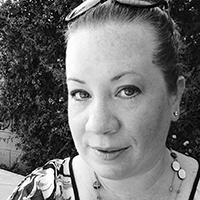 Kristen Kerrick Morton writes from Arizona, where she lives with her husband, raising their three children. Formerly an architect, she juxtaposes human scale with the universe and quantum scale. Light behaves as wave and/or particle based on personal experience, perhaps as internal lenses frame friendship and love. Photochemistry of Place investigates three magnifications: At Sea, there is distance, the macro; The Island lures the senses, the human scale; Infrared Room penetrates intuition, undertones. Light prophesizes.
Kristen Kerrick Morton writes from Arizona, where she lives with her husband, raising their three children. Formerly an architect, she juxtaposes human scale with the universe and quantum scale. Light behaves as wave and/or particle based on personal experience, perhaps as internal lenses frame friendship and love. Photochemistry of Place investigates three magnifications: At Sea, there is distance, the macro; The Island lures the senses, the human scale; Infrared Room penetrates intuition, undertones. Light prophesizes.
Heidi Rosenberg
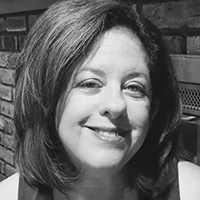 Heidi Rosenberg is a fiction writer and poet. Her short story, “The Weight of It” was the 2005 winner of Pearl’s Fiction Prize. She was a 2013 finalist in Heavy Feather Review’s fiction chapbook contest, a 2000 recipient of a Mississippi Arts Commission grant for fiction, and an artist in residence at the Ragdale Foundation. Her fiction and poetry have been published in Redheaded Stepchild, Oyez Review, Sistersong, 5 A.M., Pearl, and the Pittsburgh Post-Gazette.
Heidi Rosenberg is a fiction writer and poet. Her short story, “The Weight of It” was the 2005 winner of Pearl’s Fiction Prize. She was a 2013 finalist in Heavy Feather Review’s fiction chapbook contest, a 2000 recipient of a Mississippi Arts Commission grant for fiction, and an artist in residence at the Ragdale Foundation. Her fiction and poetry have been published in Redheaded Stepchild, Oyez Review, Sistersong, 5 A.M., Pearl, and the Pittsburgh Post-Gazette.
https://heididrosenberg.wordpress.com/
Judith Sornberger
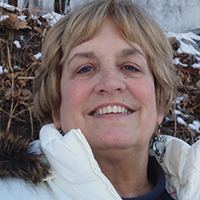 Judith Sornberger’s poems each reflect a different aspect of light; however, all of them shed light on an aspect of human connectedness. In “First Fire,” a widow’s attempts to start her first fire illumine the loss of fire’s warmth and light through the loss of her love. In “Snapshots of Margaret,” sunlight reveals the bright spirit of a friend despite a battle with cancer. Sornberger’s most recent book is the prose memoir The Accidental Pilgrim: Finding God and His Mother in Tuscany, published by Shanti Arts Publications. Her full-length collection of poems Open Heart is from Calyx Books. She is the author of five poetry chapbooks, most recently Wal-Mart Orchid, published by Evening Street Press.
Judith Sornberger’s poems each reflect a different aspect of light; however, all of them shed light on an aspect of human connectedness. In “First Fire,” a widow’s attempts to start her first fire illumine the loss of fire’s warmth and light through the loss of her love. In “Snapshots of Margaret,” sunlight reveals the bright spirit of a friend despite a battle with cancer. Sornberger’s most recent book is the prose memoir The Accidental Pilgrim: Finding God and His Mother in Tuscany, published by Shanti Arts Publications. Her full-length collection of poems Open Heart is from Calyx Books. She is the author of five poetry chapbooks, most recently Wal-Mart Orchid, published by Evening Street Press.
